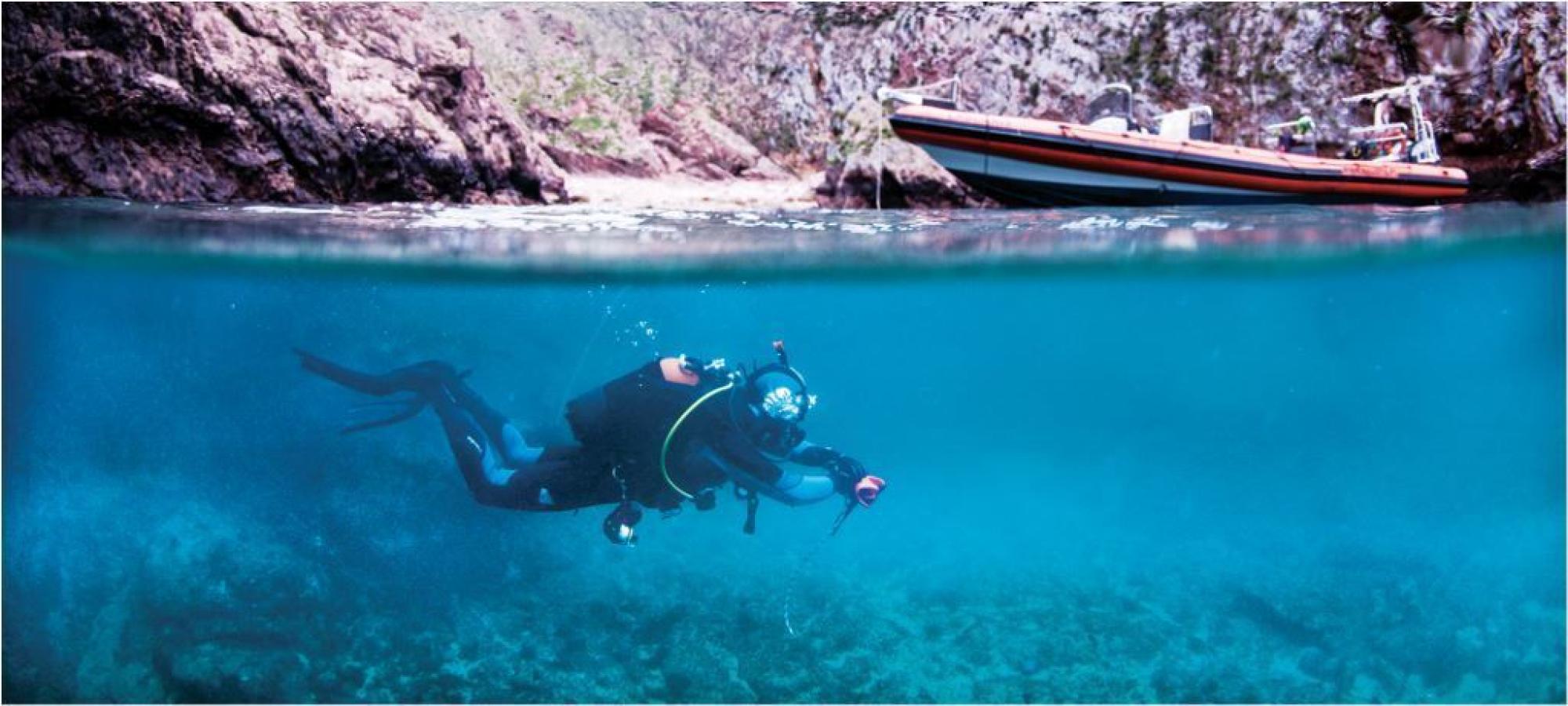Exploring Portugal from Marine to Cuisine as a Scuba Diver
Arlindo Serrao reached out to me in my weakest moment.
It was well into the throes of the pandemic. I spent hours toiling away on my laptop, trying to drum up “other work” as a freelance travel writer who could no longer freely launch herself out into the world.
Had I heard about the diving on mainland Portugal? Serrao, the founder of boutique dive concierge Portugal Dive, wanted to know.
I’d been diving in the Azores before, I told him, and had heard great things about Madeira too. But mainland Portugal as a dive destination?
There are fish everywhere, he told me. And wrecks, caves, sunken villages, blue shark dives—even mola molas. “It’s thanks to all the marine reserves Portugal has created that there’s more and more life underwater,” Serrao said. “It’s a strategy that continues to be implemented by the government and has incredible results in what you see underwater.”
Indeed, late last year Portugal created Europe’s largest fully protected marine reserve around the Selvagens Islands—a 1,034-square-mile area between the Canary Islands and Madeira.
Yet the country’s mainland hadn’t registered as a blip on my dive travel radar.
I was intrigued.
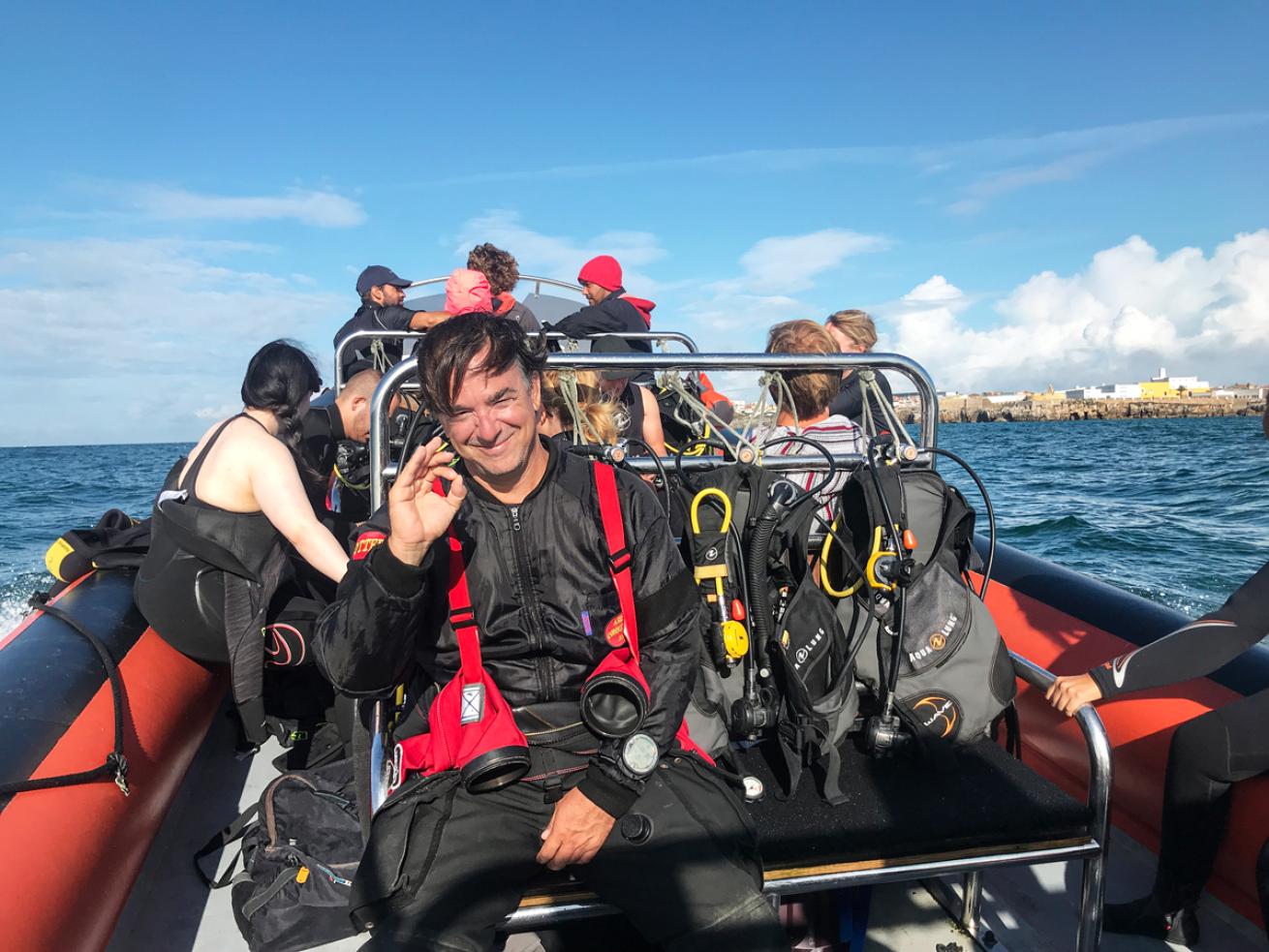
Terry WardArlindo Serrao aboard a dive boat bound for Berlengas.
Since getting certified in my early 20s as a college elective, I’ve chased tropical dive locations around the world—first the Caribbean and the Great Barrier Reef, and later Palau, French Polynesia, Fiji and beyond. In between, I’d dry off on my favorite continent of all, Europe, shelving my wetsuit to pedal a bike around Amsterdam or sip Aperol spritzes on sunny terraces in Italy and France.
Compartmentalizing my diving addiction when I needed my Euro fix was how I rolled, somehow never realizing there was a space—and a place—for both. Until Serrao put the Portugal bug in my ear.
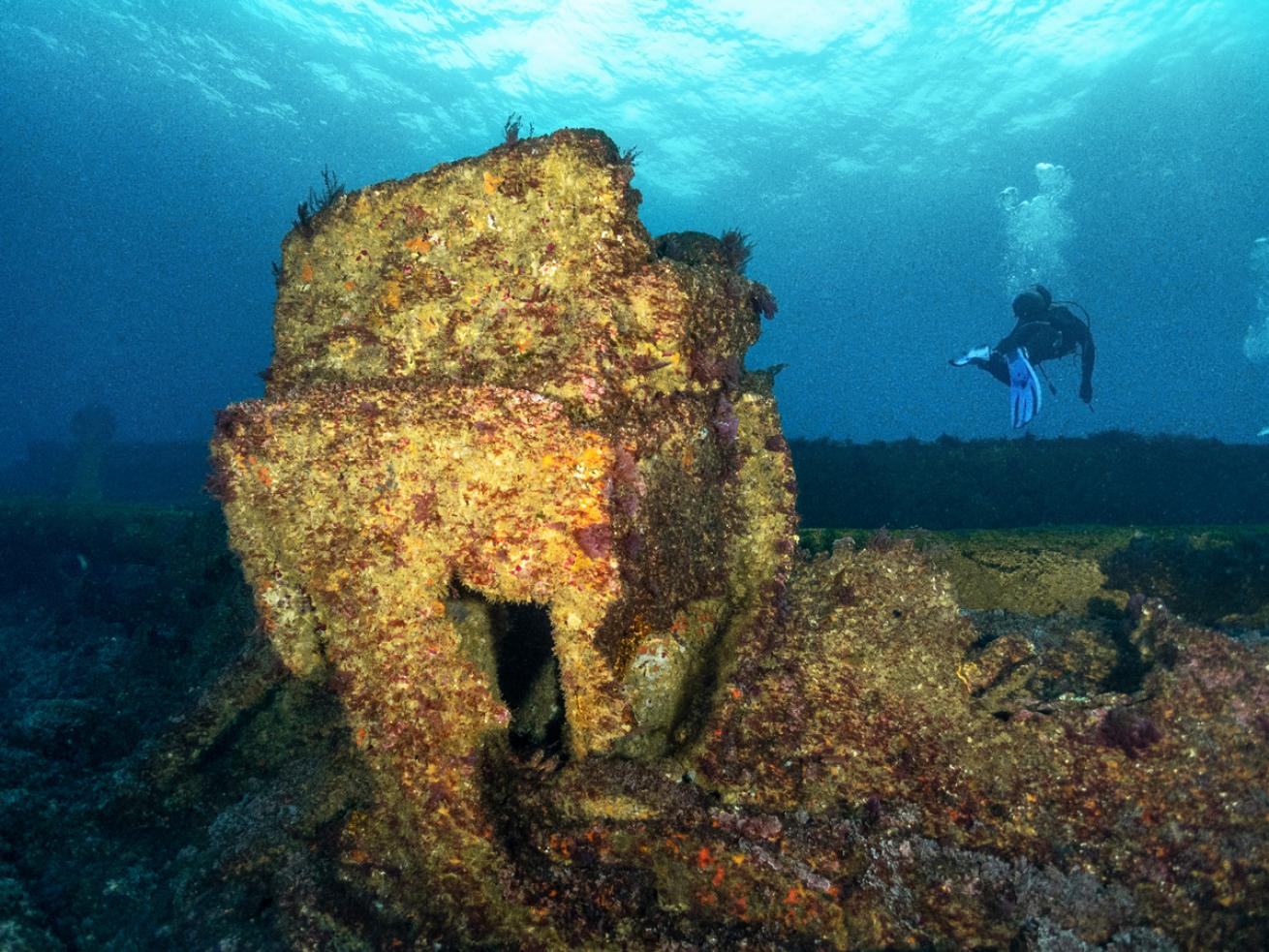
Eurico RoseiroThe nearby Highland Hope wreck.
A Classic European Capital
When it comes to diving, Portugal—where you’ll want your 7 mm wetsuit to dive year-round—is never going to be the next Raja Ampat. But the country also doesn’t need dive tourism to survive.
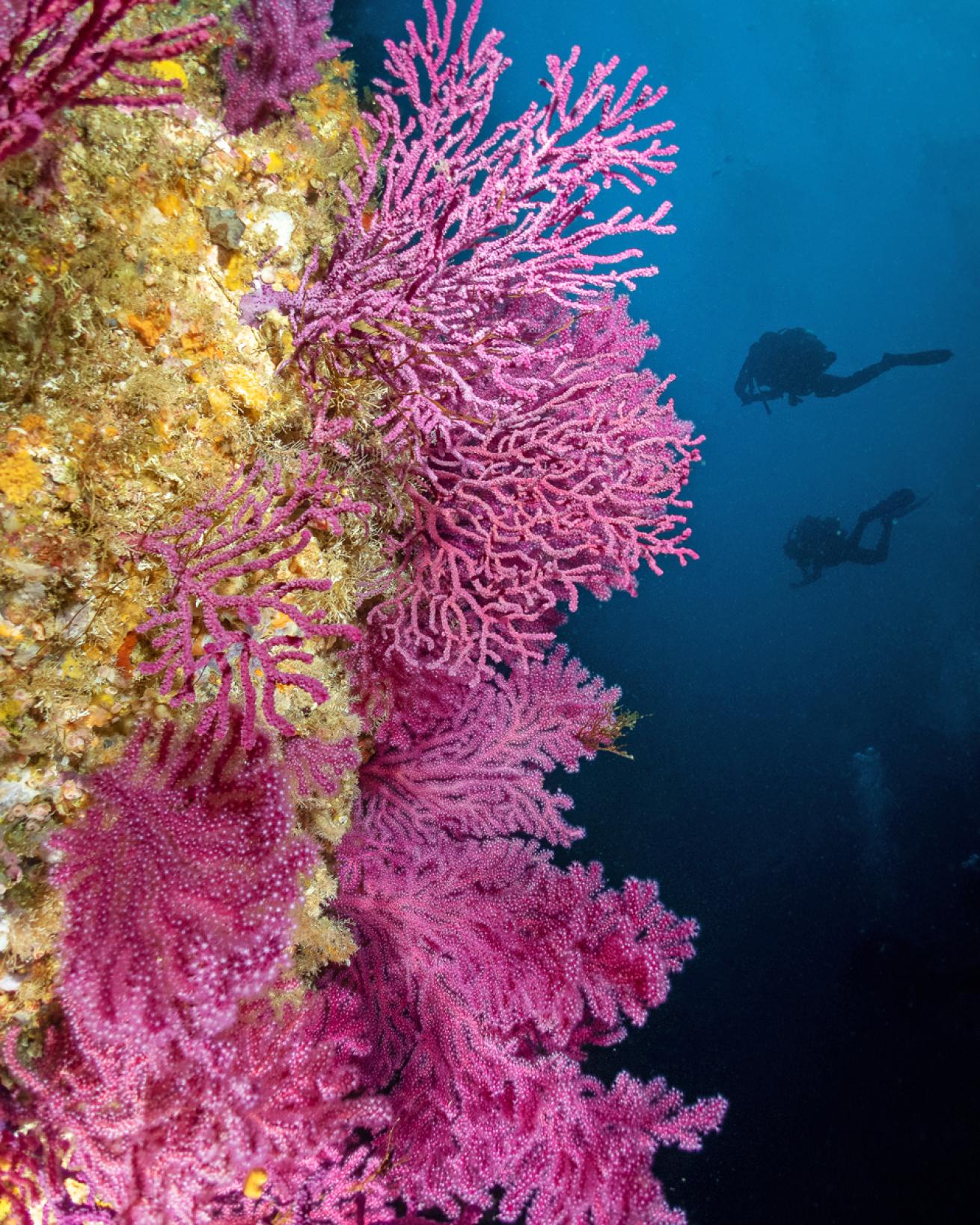
Eurico RoseiroParede Rabo de Asno, or Donkey’s Tail Wall, in Berlengas.
Located next to Spain on the Iberian Peninsula and known for its port wine and fado music, in addition to having some of Europe’s most beautiful beaches and best surf, Portugal is on track to surpass pre-pandemic tourism levels in 2023, according to the World Travel & Tourism Council.
With so many other attractions for tourists, Serrao, who in 2021 founded an international annual diving conference in Portugal called Diving Talks, admits he’s had little luck getting the country’s tourism engines to pay attention when it comes to enticing tourists to come here to dive.
As a result, he’s become even more tenacious in his efforts to appeal to those of us who will listen and consider booking a dive trip to the country.
I was an easy sell.
“Especially if you like Europe, culture, gastronomy and like to hang out with people, communicate, engage and get to know their way of life, Portugal is one of the best places in the world to dive,” Serrao told me.
As much as I’d missed diving and couldn’t wait to get back underwater, I missed everything that European travel had always lit up in me even more: incredible food, history and culture down every city street or village block, and that enviable work-life balance that I never stop striving for in my busy American life.
And here was Serrao saying there was a place I could have it all.
I decided to get to Portugal as soon as I could to see what diving there was all about.
Landing in Lisbon
Perhaps the reason most traveling divers don’t naturally think about their sport right off the bat in Lisbon is that this beautiful coastal city on the Tagus River tosses out so many other powers of seduction. Indeed, the minute my flight touched down in Lisbon, I momentarily forgot I’d come to Portugal to dive.
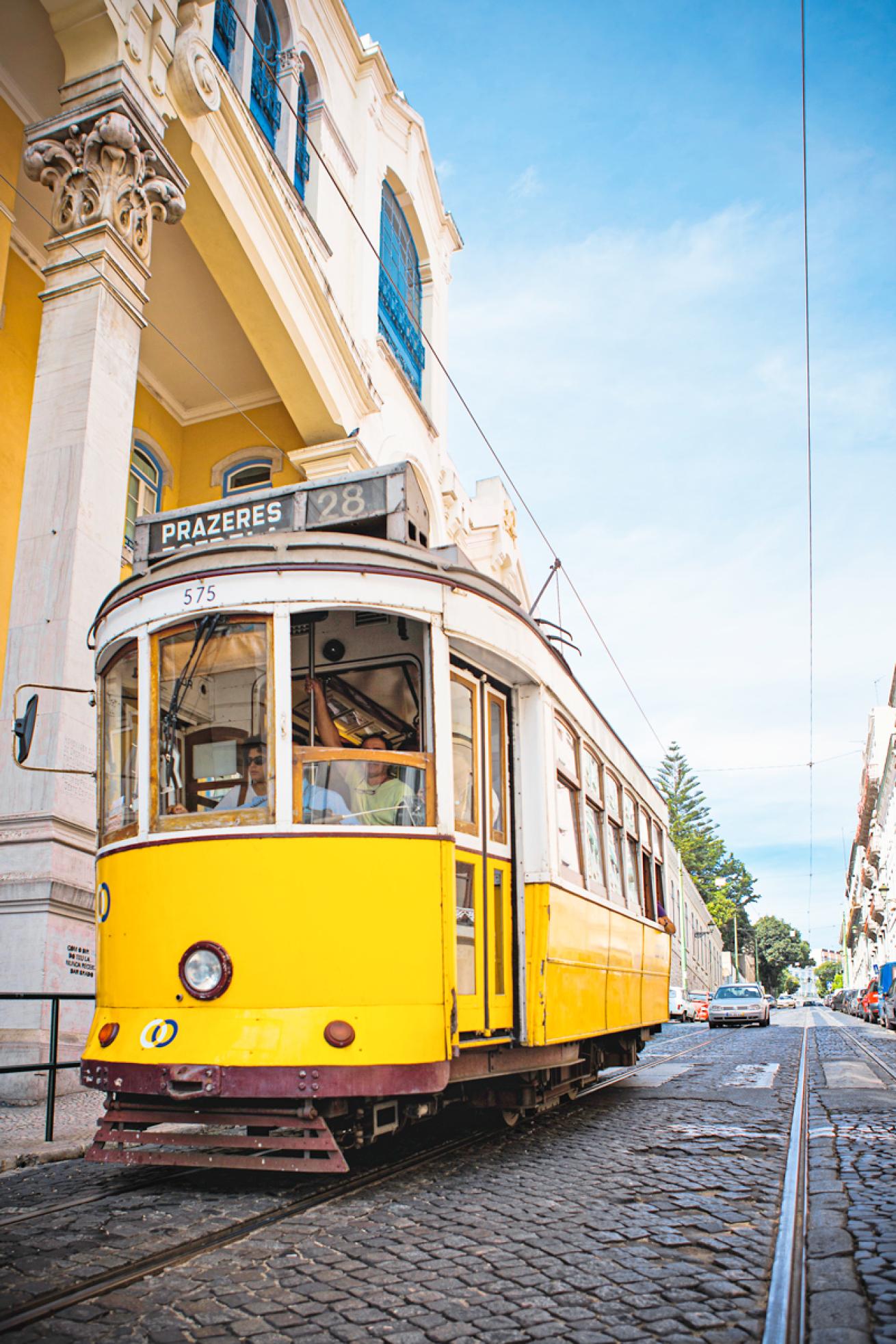
Artur CabralLisbon’s iconic trams carry riders around the capital city.
There are the hilly neighborhoods of the Bairro Alto and Graça, where bright-yellow trams zip by and cobbled roads invite you to get lost in the flow of street life that always feels like the flow of life itself to me whenever I’m back in a European city made for people instead of cars.
On the day I arrived, I walked from the colorful neighborhoods on high down to the river. Then I staved off jet lag over a lunch of delicious cod dishes and copious refills of vinho verde at a restaurant alongside the Centro Interpretativo da História do Bacalhau, where you can learn all about the long Portuguese relationship with the fish that becomes their beloved bacalhau (salt cod).
Diving was distant from my mind as I strolled the riverfront Belém district, following the scent of pastéis de nata to Pastéis de Belém, which allegedly sells 20,000 of its famed flaky custard tarts per day. Luckily Serrao was there to remind me why I came.
A Wreck to Remember
We jumped into his car the next morning to drive 25 miles south of Lisbon to the pretty fishing village of Sesimbra, where colorful wooden boats bob in a packed harbor and one of Portugal’s best and most easily accessed wreck dives beckons close to shore.
Morning broke clear, sunny and calm on the early fall day when Ricardo Germano, manager at Dive Club Cipreia, greeted us at the shop at the city’s naval club, fronting the marina. We geared up and loaded our tanks into the boat to motor roughly 1 mile west along the coast to Cabo Espichel, sheer golden cliffs rising to starboard all along the coast.
Like many people in the Lisbon area, Germano remembers the fierce winter storm back in 1989 that forced the Nigerian cargo ship River Gurara onto the rocks after its engine failed. The boat split in two, taking the lives of 21 crew members with it.
Back then, Germano helped with cleanup efforts on the shoreline. Today, the pristine waters within the Professor Luiz Saldanha Marine Park here thrum with life attracted to the structure of the bisected 575-foot-long ship, which rests at depths between 60 and 101 feet and makes for two different dives.
We opt to dive the stern, which lies close to the imposing walls of the cape, between 60 and 85 feet deep. The ocean is bottle-green and brisk (temps in the upper 60s) as we pull ourselves down the cable—there’s no anchoring within the marine park—and soon enough the ship’s intact propeller and engine morph into view. An enormous conger eel slinks out from the boat’s bowels as if to greet us.
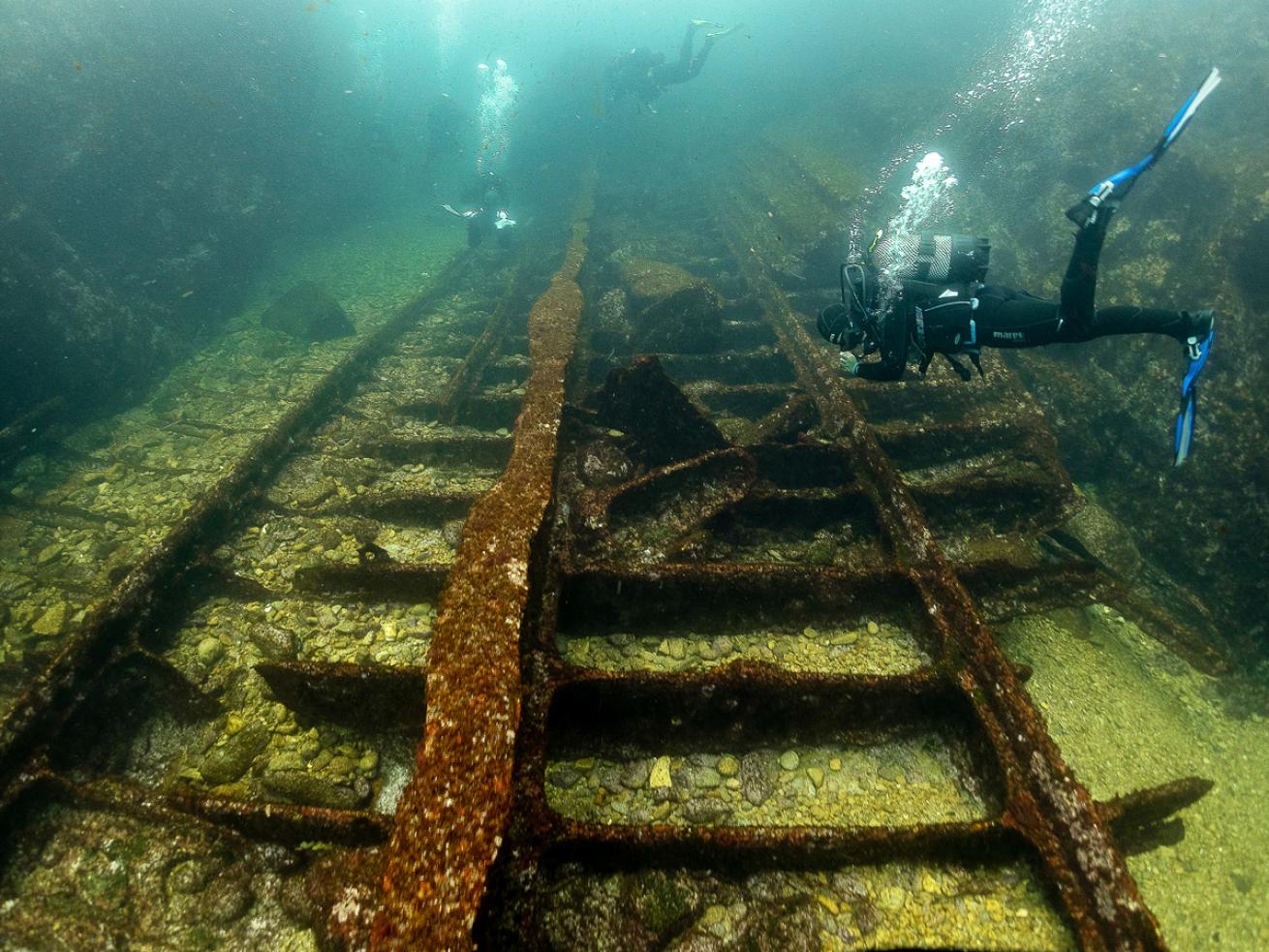
Eurico RoseiroThe wreck of the British cargo ship SS General Eliott near Berlengas.
Schools of sea bass and meagre (corvina) cloud the wreck, and Germano points out octopuses and giant lobsters sheltering in the metal.
The contrast of the life that is and the life that was lost has me catching my breath and gathering my thoughts back on the surface, where I relish the sun’s warm rays just a little more than usual post-dive.
Surfer’s Paradise, Diver’s Dream
The next day, Serrao and I hit the road to travel 62 miles north of Lisbon to Peniche, with its 16th-century fortress fronting the harbor. The pretty little town has boomed into Europe’s most famous wave-riding spot, with more surf schools and board-rental shops than you can shake a bar of wax at.
But savvy scuba divers—most of them European—have Peniche on their radar for exploring the Berlengas Biosphere Reserve, a clutch of three rocky islets some 7 miles offshore that have been protected as a marine reserve since 1981.
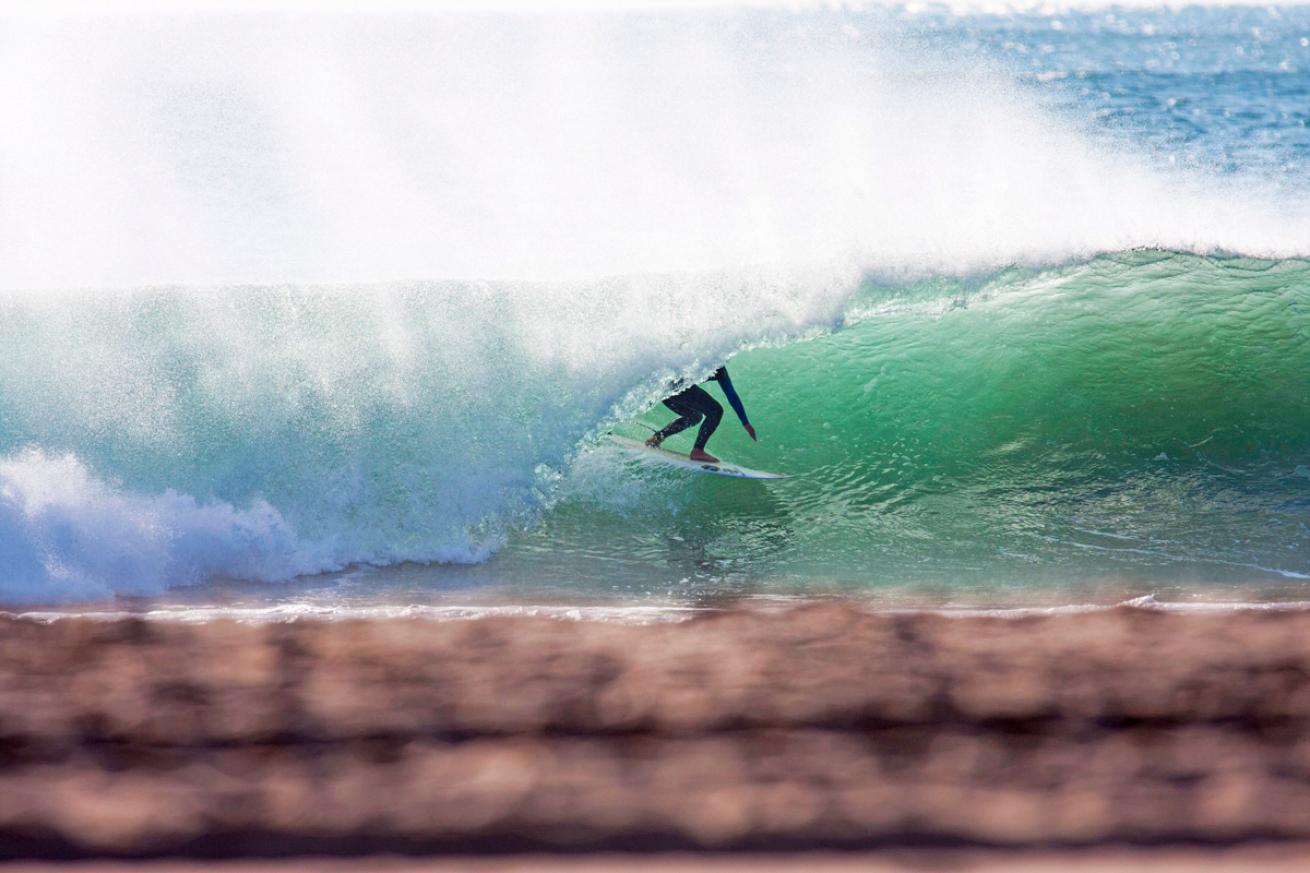
Andre CavalhoA surfer at a Cascais beach, just west of Lisbon.
Washed with currents and rippling with life, Berlengas is the epicenter of mainland Portugal’s best diving. Mola mola—ocean sunfish that are smaller than their cousins in Bali, but impressive nonetheless and prone to jump forth enthusiastically from the water—can even be seen here from around mid-August through December.
We ride the rigid inflatable boat 25 minutes from the marina one morning with Haliotis, a dive shop that opened its doors in Peniche back in 2004 and has pretty much pioneered diving in this town better known for surfing waves.
“People are always surprised by the amount of fish we still have in Europe when they dive here,” the shop’s owner, Jose Alberto, tells me. “There are other places with clear water and gorgonians in the Mediterranean like we have here, but it’s the fish life that really surprises people in Berlengas.”
When we arrive at the dive site Ilhéu Maldito on the east side of Berlenga Grande, the scenery is positively Jurassic. Towering cliffs dwarf our RIB, and a cavern yawning from the water’s surface is sucking hungrily at the ocean as if it’s feasting on its last meal. I can hardly wait to see what’s underwater. Serrao zips into his drysuit as I pull on my hood to keep warm in my 7 mm wetsuit, and we back-roll off the boat into an ocean that’s nearly Caribbean in hue, if quite a bit more bracing.
We start the dive by finning into a canyon glittering with dappled light, then enter a small sea cave, where Jose Alberto explained that a halocline effect gives the table-like rock formation a curious glued-together appearance. Big conger eels lurk near the sand. We follow the island’s sheer flanks into a second, larger cave, where we’re soon enveloped in twilight edging toward darkness, the reassuring blue glow lighting the way to the exit at our backs.
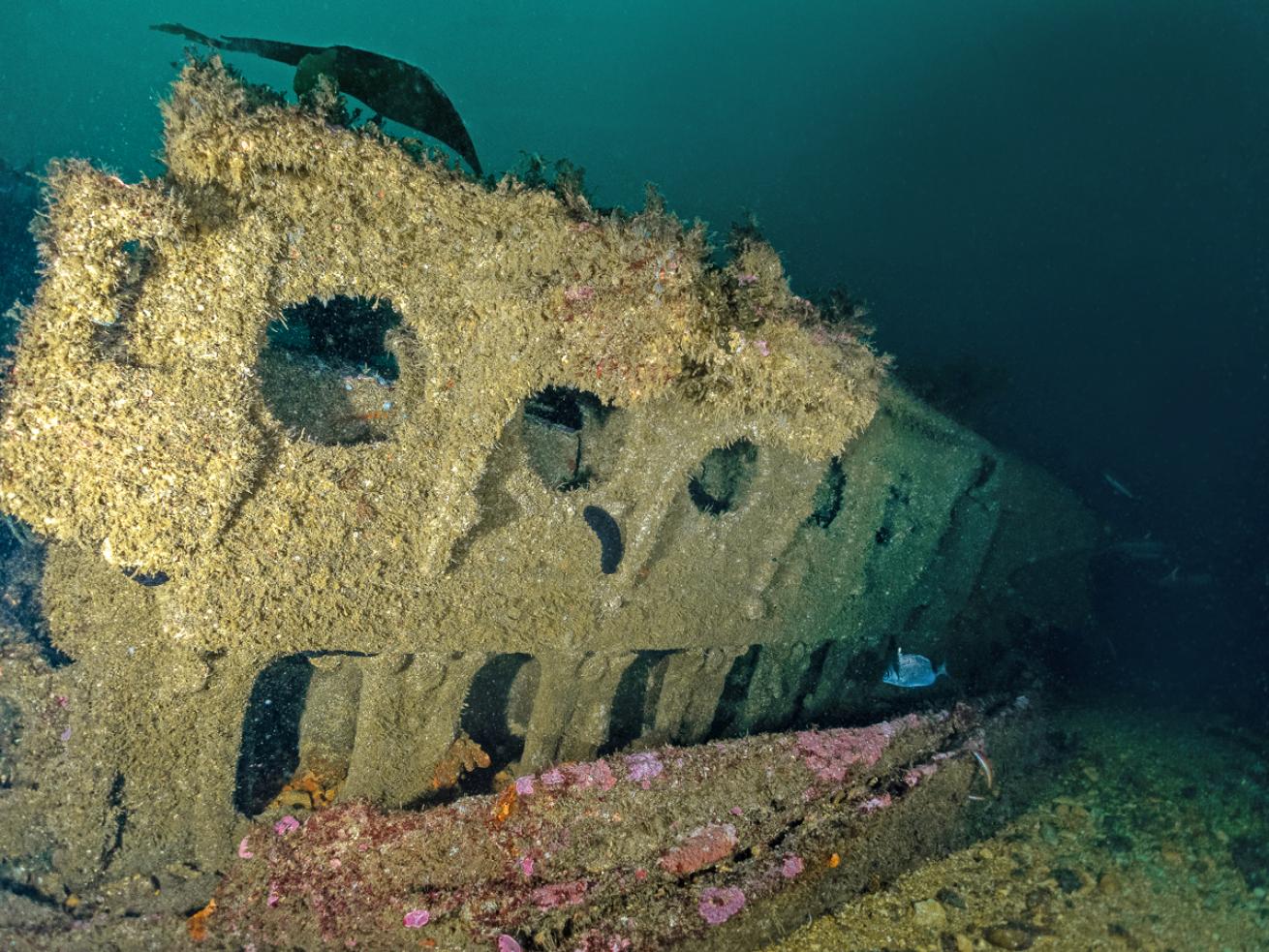
Eurico RoserioThe stern section of the River Gurara, a Nigerian cargo vessel that split into two pieces when it wrecked in 1989.
Serrao shines his dive torch up at the ceiling, and the sight is so wondrous I gasp into my regulator: scores of glinting triggerfish schooling in a cloud make me feel like I’m gazing up at an underwater constellation. Back in the daylight there’s plenty to see too, as wrasse cruise across the sandy bottom and schools of sea bass cloud around, seemingly unperturbed by our presence in this marine protected area.
We circle the main island to see the impressive Fort of São João Baptista das Berlengas, which dates to 1502, and catch sight of a mola mola drifting on the water’s surface. Then it’s back to the marina and Peniche’s old town, where a wine-fueled, sustainable seafood dinner unfolds over a few delicious hours at Tasca do Joel.
A Tractor, A Boat, and Some Divers Roll Onto a Beach…
My last dive of the week, near Lisbon, comes with a fun first for me. Despite having logged hundreds of dives, I’ve yet to launch from the beach in this particular way.
At Cabana Divers, a rustic dive shop that’s little more than a room attached to a favorite local restaurant hovering right over the sprawling sands of Fonte da Telha Beach, just 30 minutes south of Lisbon, Serrao and I meet up with a group of divers from a local club.
Within moments, we’re cheering on a massive red tractor as its driver pulls our flat-bottom dive boat across the beach and down to the water’s edge. When the tractor can take our boat no further without risk of getting stuck in the wet sand, we all heave and ho the gunwales to slide the boat the rest of the way into the calm surf. Then we pass tanks and boxes of gear on board, assembly-line style, and pile in. A short ride brings us to a site called Pedra da Lagoa—a reef frenzied with fish and covered with interesting rock formations that bottoms out in about 90 feet of water.
“I always tell people that you dive with what you see on the plate later here,” my guide, Ana Claudia Ferreira, with Portugal Dive, tells me. “The fish we are going to dive with today is what we eat.”
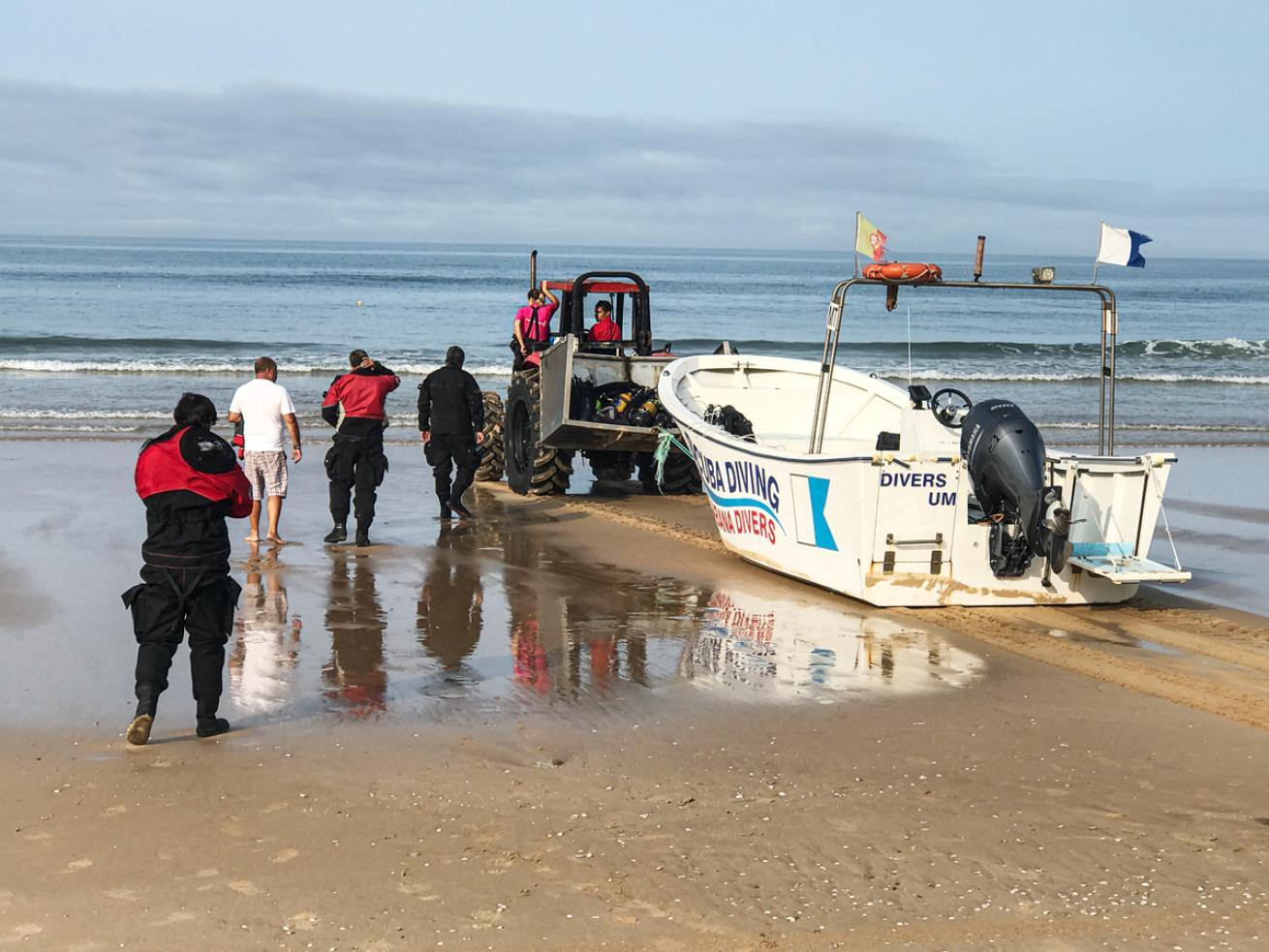
Terry WardA tractor pulls the dive boat out to sea.
I follow her down the line, and the movable feast comes finning into view—a conveyor belt of sea breams and pouts in the water column, and lobsters, crabs and octopuses poking from the rocky nooks and crannies.
The photographers get busy pointing their domes at nudibranchs and other critters as the rest of us poke around as if on a treasure hunt during an hour of bottom time that goes by in a flash.
After the dive and a hot shower back at the shop’s wooden deck, we move next door to an outdoor table at Cabana Beach Bar.
It’s a Tuesday, and I wonder how everyone has managed to take the entire morning and languorous lunch hours off. Then I remind myself where I am.
“We know when we come to dive at this place in the morning we won’t be home until the later afternoon,” Ferreira tells me, as our group of Portuguese divers settles around a big table overlooking the beach and a parade of seafood dishes—nearly all of it sourced from the waters where we’ve just dived—arrives to rumbles of appreciation that need no translation.
We clink frosty beers, spirits warmed by the sun and camaraderie, and feast till we’re full.
Then the dive shop’s owner, Virgilio Silva—the man who pioneered the tractor dive here many years back but now prefers to spend his time entertaining guests at his restaurant—emerges with a bottle of schnapps.
It’s persimmon aguardente, made from the fruit from his yard. He pours everyone a shot glass full and raises his, uttering a toast in Portuguese that goes over my head but straight to my heart.
It is so good to be back in Europe, and back diving.
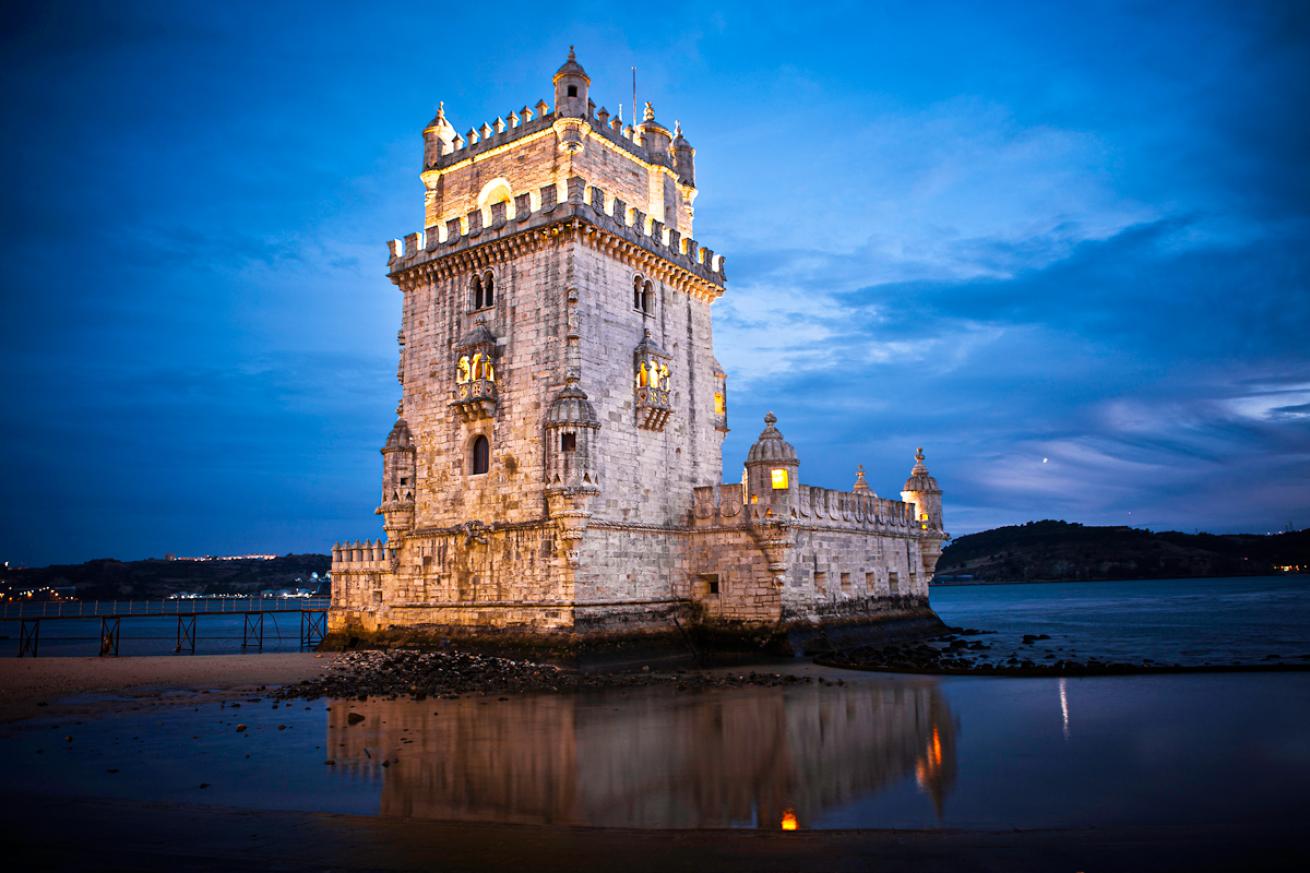
Turismo LisboaLisbon’s iconic Belém Tower.
More Dive Sites
U1277 - Porto
This World War II German submarine, scuttled by its crew to avoid capture in 1945, sits in 100 feet of water 2 miles off the coast of Porto. White anemones cover the U-boat’s hull, and the submarine’s combat periscope and open hatch are among the highlights advanced divers descend to see.
Cathedral Sagres - Sagres, Algarve
Portugal’s southern Algarve region is a good spot for both beginners and experienced divers to get a cavern fix. Stone boulders huddle around the entrance to this ocean cave where divers can see corals and nudibranchs alongside interesting rock formations. Divers with the proper training venture further inside.
Pata Roxas - Cascais
The sandy bottom at this dive site off the pretty fishing-turned-resort town of Cascais can make for poor visibility. But it’s worth the dive to get up close to the shy resident small-spotted cat-shark—a small shark species that dwells here where the rocky substrate meets the sandy bottom.
Ponta Da Passagem - Sesimbra
Walls covered with yellow sponges, anemones and the occasional nudibranch make this canyon dive with a maximum depth of 72 feet off the fishing village of Sesimbra a diver’s delight. Look for golden and moray eels, cuttlefish and other typical denizens.
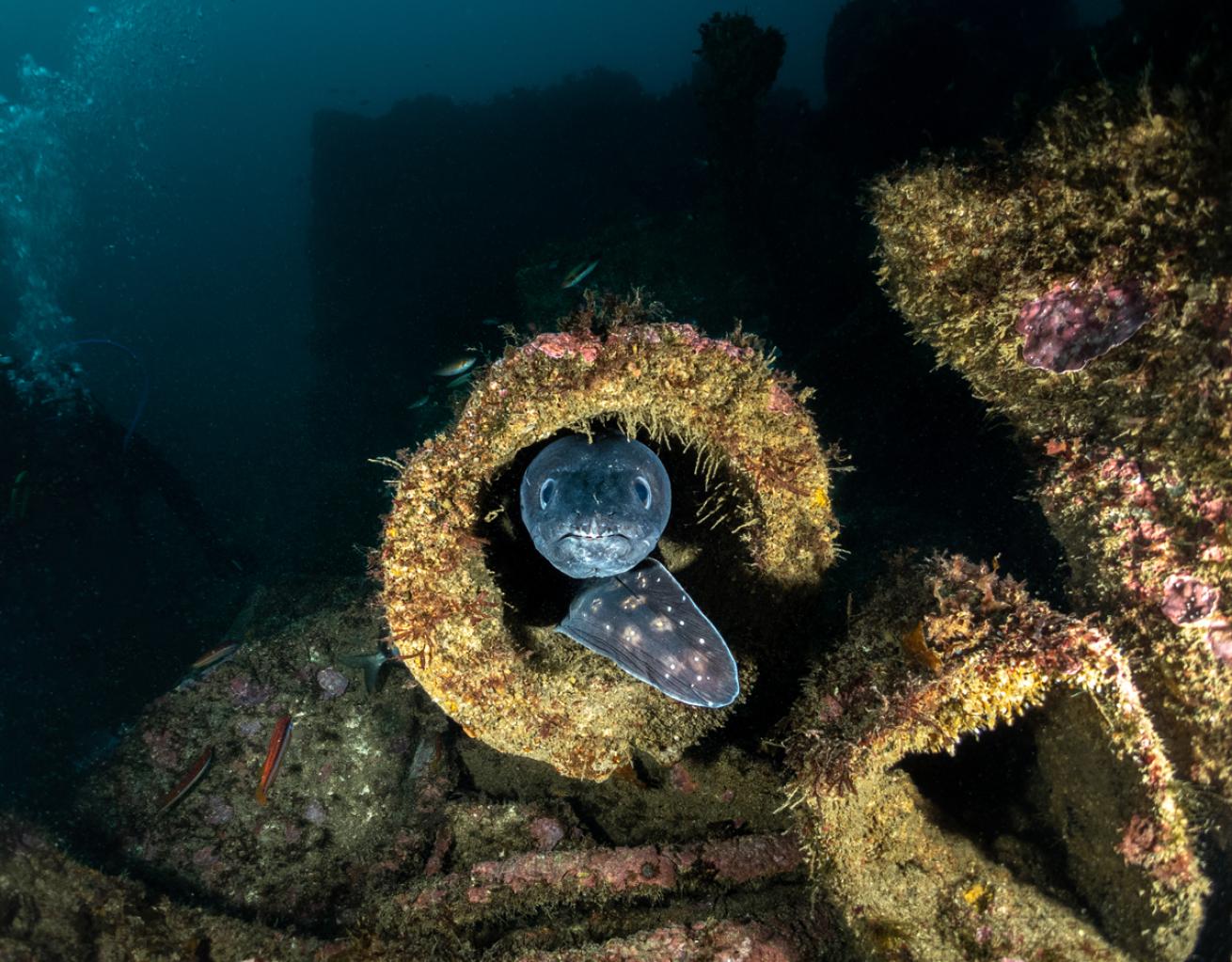
Eurico RoseiroA face peeks out from the River Gurara in Portugal.
Vapor Do Trigo Wreck - Berlengas
One of the most reliable places in the Berlengas Archipelago for spotting mola mola thanks to merging currents, this sheltered wreck dive, also called the Andreos wreck, bottoms out at around 100 feet. You could easily spend your entire dive exploring the largely intact hull, where massive lobsters and conger eels peek from nooks and crannies.
Olho Do Moinho Da Fonte - Almonda Spring
For trained and experienced cave divers only, this Swiss cheese-like cave system, where divers enter near the dam of a working toilet paper factory that dates to the 1960s, leads to fascinating karst and fossil formations. The site can only be dived during the dry season (typically from March to November), when the spring’s flow rate is least intense.
Parede Rabo De Asno - Berlengas
The must-do dive in Berlengas translates to Donkey’s Tail Wall, which does little to prepare you for the striking contrast between the crimson red of lush gorgonians carpeting the wall and the deep-blue waters. Pouts crowd into a deep cave 100 feet down, and currents bring pelagics to feed near the wall. Mola molas are frequently sighted too.
Need To Know
When To Go You can dive year-round in Portugal, but April to October brings the best topside weather and warmest water temperatures. For the best visibility, come in January and February, when the waters off the mainland can be as clear as they are in the Azores.
Dive Conditions Water temperatures can dip into the 50s during the winter months and reach close to 70 in summer. Visibility hovers in the 10- to 50-foot range year-round. If you don’t have a drysuit, you’ll want a 7 mm semi-dry or wetsuit, hoodie and boots. Wetsuits can be rented in Portugal, but you’ll have to bring your own suit if you plan to dive dry.
Getting There Portugal’s national carrier, TAP Air Portugal, offers non-stop flights to Lisbon from several U.S. cities, including Miami, New York and San Francisco.
Suggested Training With many dives in the 80- to 100-foot range, it’s a good idea to have an Advanced Open Water Diver certification, although shallower dives are also an option around the country. Consider getting drysuit certified if you want to stay warmer diving.
Operators Cabana Divers; Dive Club Cipreia; Ecoalga; Haliotis Diving Center; WeDive Lagos
Portugal Dive is a bespoke dive travel concierge that can arrange all of your diving around the mainland as well as in the Azores and Madeira, including transfers, topside activities, hotel accommodations, tours and more.

